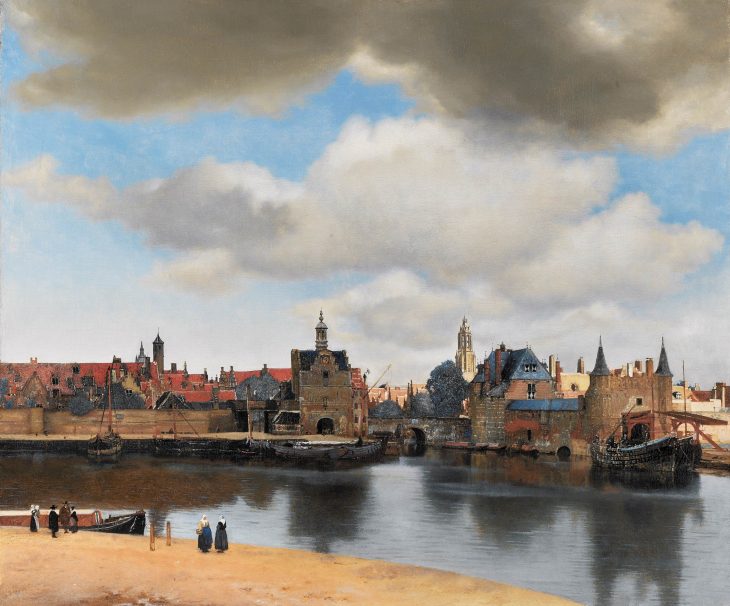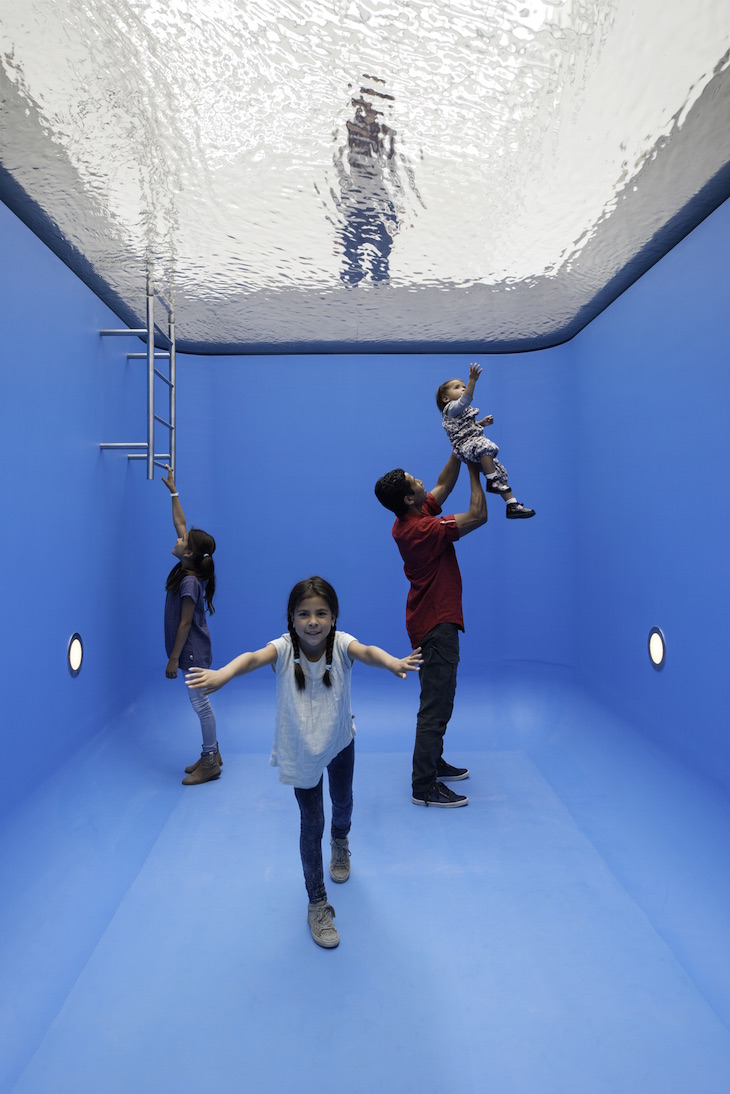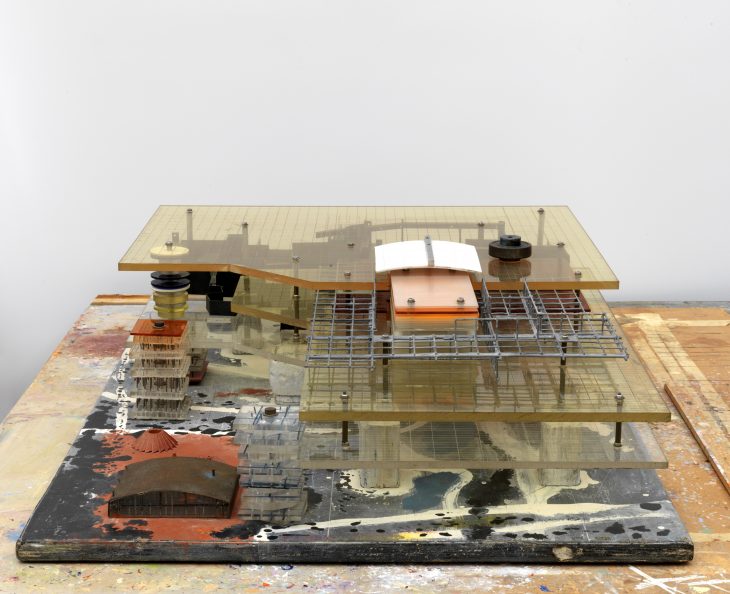Apollo recently asked leading figures in the museum and art worlds to pick out five items from public collections in the UK that every child in the country ought to see. Below, the directors of five major Dutch museums and foundations pick out the objects that should be essential viewing for schoolchildren in the Netherlands.
Emilie Gordenker
Director of the Mauritshuis

View of Delft (c. 1660–61), Johannes Vermeer. Mauritshuis, The Hague
View of Delft (c. 1660–61), Johannes Vermeer
Mauritshuis, The Hague
Vermeer’s best known work is the Girl with a Pearl Earring, but the View of Delft hangs in the same room in the Mauritshuis. It is a virtuoso display of Vermeer’s skill and highly evocative of time past. Plus, the painting is too fragile to travel, so a visit to the Mauritshuis is a must!
Anatomy Lesson of Dr. Nicolaes Tulp (1632), Rembrandt van Rijn
Mauritshuis, The Hague
Every Dutch schoolchild should know about Rembrandt. This painting, perhaps less in the public eye than The Night Watch, is particularly appealing to kids, who often tell me it’s memorable and slightly scary.
Pekelharing (1629), Judith Leyster
Frans Hals Museum, Haarlem
A pekelharing (‘salty herring’) is often a big drinker, whose throat is always dry. This jolly painting is a reminder that some things never change. It is by one of the rare, successful women artists of the Dutch Golden Age.
Panorama Mesdag (1881), Hendrik Willem Mesdag
Panorama Mesdag, The Hague
This extraordinary cylindrical painting is more than 14 metres high and about 40 metres in diameter. Visitors view the work from an observation gallery in the centre of the room, creating the illusion of standing on a high sand dune overlooking the sea, beaches and village of Scheveningen in the late 19th century. I recommend a visit to the actual beach with kids after this eye-popping experience.
Portrait of Joseph Roulin (1889), Vincent van Gogh
Kröller-Müller Museum, Otterloo
Like Rembrandt and Vermeer, Van Gogh is an artist all schoolchildren should know. This colourful and direct portrait is incredibly appealing, with the added bonus that it’s in the Kröller-Müller Museum, situated in a nature reserve with a sculpture garden and plenty of places to run around.
Judikje Kiers
Director of the Amsterdam Museum

The attic church at the Museum Ons’ Lieve Heer op Solder. Photo: Arjan Bronkhorst
Museum Ons’ Lieve Heer op Solder, Amsterdam
Tucked away in the heart of Amsterdam’s inner city lies a small gem: ‘Our Lord in the Attic Museum’, a uniquely preserved 17th-century house from the Dutch Golden Age. Explore the narrow corridors and climb the stairs past the living rooms, kitchens and bedsteads to the literal highpoint of the museum: an entire church in the attic!
Dam Square with the New Town Hall under Construction (1656), Johannes Lingelbach
Amsterdam Museum
This painting shows how the Netherlands was, and still is, a true melting pot, with visitors and inhabitants who come from all over the world.
Museum Willet-Holthuysen, Amsterdam
As if time has stood still, the rooms, the banquet hall and corridors of this 19th-century canal house, with its precious furniture, art and antiques, have been preserved exceptionally well. Visitors experience the life of a wealthy family living on the Amsterdam canals in the 19th century. Today, the canal belt is a recognisable example of typical Dutch urbanity. The small scale, the water in the city, the numerous bicycles; all characteristics of a true Dutch city.
Sunflowers (1889), Vincent van Gogh
Van Gogh Museum, Amsterdam
With just three shades of yellow, Van Gogh achieves a radiant harmony of colours.
Girl with a Pearl Earring (1665–1667), Johannes Vermeer
Mauritshuis, The Hague
No regular portrait but a tronie of a girl wearing a headscarf and an unusually big pearl earring. That Vermeer knew how to use light in his paintings is well expressed in the glistening on the girl’s lips and on the pearl.
Wim Pijbes
Director of Stichting Droom en Daad

The Night Watch (1642), Rembrandt van Rijn. Rijksmuseum, Amsterdam
The Night Watch (1642), Rembrandt van Rijn
Rijksmuseum, Amsterdam
On the earliest museum visit I can remember, at the age of 12, our teacher told us (with a low voice, slowly): ‘Boys and girls, listen carefully – this is The Most Important Painting In The Whole World.’ The altar of the Low Countries, not one single king or ruler, but a group. Power to the people!
Victory Boogie Woogie (1944), Piet Mondrian
Gemeentemuseum, The Hague
This painting makes your eyes go dancing; so colourful, so joyful. Total freedom.
The Potato Eaters (1885), Vincent van Gogh
Van Gogh Museum, Amsterdam
Look at these poor people, how they suffered, so long ago. No mobile phone, no TV, no colour at all, dreary misery.
Panorama Mesdag (1881), H.W. Mesdag
Panorama Mesdag, The Hague
By far the largest painting in the country and one of the largest in the world. This is 19th-century virtual reality, oil on canvas on a massive scale in the round. An ode to the sea.
The Square Man (1951), Karel Appel
Rijksmuseum, Amsterdam
Yes he is naked, and yes ‘my little brother could have painted it’ (but he didn’t). A new generation of post-war, freedom-seeking artists were exploring a new visual language, vivid and full of energy.
Suzanne Swarts
Director of the Museum Voorlinden

The Swimming Pool (2016), Leandro Erlich. Courtesy Museum Voorlinden
These five works show children that art can be about an experience. They offer unexpected effects and visual sensations that trigger the imagination.
Swimming Pool (2016), Leandro Erlich
Museum Voorlinden, Wassenaar
A swimming pool inside Museum Voorlinden that you can enter, but you don’t get wet! Leandro Erlich plays with expectations and illusions and in doing so, he creates an extraordinary experience full of wonder.
Hide and See(k) (2013), Jeppe Hein
Rijksmuseum, Amsterdam
This water pavilion is a modern take on 17th-century baroque fountains that surprise the people walking by. At any moment, a splash of water can throw you off guard.
Infinity Mirror Room – Phalli’s Field (1965), Yayoi Kusama
Museum Boijmans van Beuningen, Rotterdam
Yayoi Kusama visualises her hallucinations by making endless, dotted mirror rooms. Here, you can immerse yourself in the universe of this Japanese artist.
Jardin d’émail (1974), Jean Dubuffet
Kröller-Müller Museum, Otterlo
Jardin d’émail is a sculpture, but one you can play in. Jean Dubuffet made a garden out of fibreglass and epoxy resin with surreal looking bushes and trees. It is as if you are in a three-dimensional line-drawing.
Vertigo (2008), Anish Kapoor
Museum De Pont, Tilburg
This curved mirror plays with your senses. It offers tremendous joy by reflecting the viewer in endless different ways.
Benno Tempel
Director of the Gemeentemuseum

Red Sector (From the New Babylon Project) (1958), Constant. Photo: Tom Haartsen; courtesy Gemeentemuseum den Haag
To me, Dutch art is about light (because of the landscape, so near the sea), and the visionary belief in a new society.
Red Sector (From the New Babylon project) (1958), Constant
Gemeentemuseum, The Hague
Playful, visionary sculptural installations that dream of a united Europe, in which people are free from work and can play in an intellectual way.
Still-life with Asparagus (1697), Adriaen Coorte
Rijksmuseum, Amsterdam
The asparagus have become light and are almost translucent: a combination of Dutch light and a sincere interest in objects.
Day and Night (1938), M.C. Escher
Escher in The Palace, The Hague
An illusionistic point of view of a typical Dutch landscape. It not only tricks the mind, it also makes clear that in the Netherlands almost everything is man-made.
Victory Boogie Woogie (1942–1944), Piet Mondrian
Gemeentemuseum, The Hague
Mondrian’s last painting, on which he worked for two years. The ultimate, vibrant tribute to freedom.
Untitled (1987), Rob van Koningsbruggen
Schunck Collection
All too often, we do not consider Dutch art as being colourful. Van Koningsbruggen’s often small paintings hold a unique place in Dutch art: colourful and with a clear light, they are comparable only to the work of Venetian painters like Titian or Veronese. But they are also abstract, in a way that might be called disturbing.














![Masterpiece [Re]discovery 2022. Photo: Ben Fisher Photography, courtesy of Masterpiece London](http://zephr.apollo-magazine.com/wp-content/uploads/2022/07/MPL2022_4263.jpg)
‘Like landscape, his objects seem to breathe’: Gordon Baldwin (1932–2025)